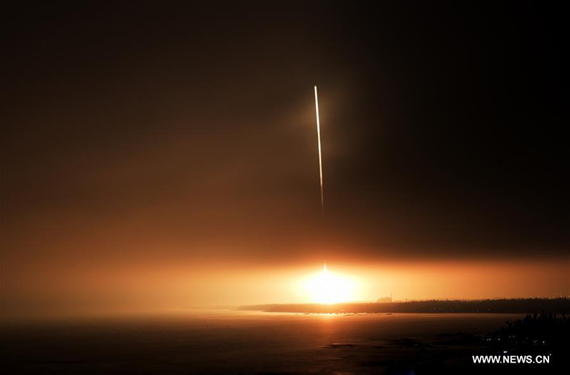
China's first cargo spacecraft Tianzhou-1, atop a Long March-7 Y2 carrier rocket, blasts off from Wenchang Space Launch Center in south China's Hainan province, April 20, 2017. (Xinhua/Yang Guanyu)
SUPPORTING SPACE STATION
Space cargo ships play a crucial role in the maintenance of a space station.
Cargo ships can send all kinds of supplies to the space station which can be an experiment field for developing technology in space.
Huang Weifen, a deputy chief designer of the Astronaut Center of China, said that supplies carried by Tianzhou-1 include goods that will meet the basic living and working needs of three astronauts for 30 days in space, including drinking water, oxygen bottles and nitrogen bottles.
Also onboard include facilities for microorganism tests, and sensors are installed to obtain data such as mechanics and temperature for the future design of the space suit outside a spacecraft.
"We hope to gather relevant data through this mission and accumulate experience for sending material for the future space station," she said.
VISION OF SPACE POWER
Although China has achieved many giant steps in space exploration, the country's space odyssey is far from over as it eyes building its own space station and far beyond that: landing on Mars.
In 1992, the central authority approved a three-step manned space program.
The first step, to send an astronaut into space and return safely, was fulfilled by Yang Liwei in Shenzhou-5 mission in 2013.
The second step was developing advanced space flight techniques and technologies including extra-vehicular activity and orbital docking.
The final step will be able to operate a permanent manned space station.
Chinese scientists said they plan to launch a core module of the country's first space station around 2018, followed by two experiment modules.
The station in the primary stage will be composed of three modules: core module, experiment module I and experiment module II. Each module will weigh more than 20 tonnes and together the three will be structured in the shape of T. The core module will be in the middle with an experiment module on each side.
During its operation, the space station could be linked to one additional cargo ship and two manned spacecraft at one time, and the maximum weight of the whole assembly could reach up to 90 tonnes.
Based on such design, scientists will keep updating capsules in accordance with scientific research and extend their abilities.
With the International Space Station set to retire in 2024, the Chinese space station will offer a promising alternative, and China will be the only country with a permanent space station.
So far, China has successfully launched 11 Shenzhou series spacecraft, including six manned spacecraft that lifted 11 astronauts into space.
The country strives to realize the third step of its lunar program in 2017: sending Chang'e-5 lunar probe onto the moon which will return with samples.


















































